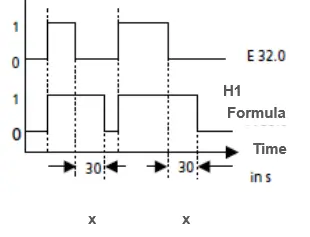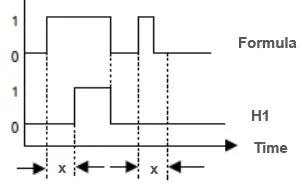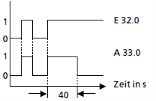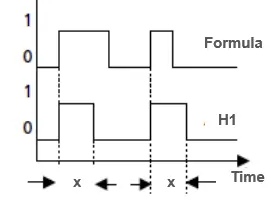Status and Auxiliary Variables
Status
A “status” is a possible operating status of the group of elements to be controlled. For a heat pump equipped with a switching valve for tank charging, the operating statuses could be the following: “Charge tank for space heating”, “Charge tank for domestic hot water”.
For each status, the user can use a formula to define when this is active. Only one status can be active at a time.
Auxiliary Variables
Auxiliary variables can be used in three different ways.
Constant
The auxiliary variable may be used as a constant with a unit. The entered value is converted to the basic unit and may be used in the formulas for states or outputs through the variables from H1 to H16 or from PH1 to PH16.
So, for example, a cut-in temperature may be comfortably entered in the unit system (°C or F) that can be set in the Polysun settings without the need for the value to be searched for and adapted in the formulas.
Formula
Entering a formula, the user can calculate an intermediate result that may be used in the formulas for states or outputs through the variables from H1 to H16 or from PH1 to PH16.
So, for example, you may calculate an intermediate result that can be re-used in several formulas.
Time-Delay
With a time-delay, signals may be delayed or extended. There are four different types of delay that are listed below. With a formula, the user can define when the delay should start (result of the formula = 1). With the variables from H1 to H16 or from PH1 to PH16, the user can check in the formulas for states or outputs whether the time function has run out (1 = running, 0 = run out).
So, for example, a pump can be switched on with a delay after the switch-on condition is fulfilled in order to avoid it being turned on and off too frequently.
As the length of time steps is variable, the entered time delays may be not exactly complied with. Time functions may only start or run out when a time step is running.
- SA Start of a time as a cut-off delay.
If the result of the formula changes to “0“, the entered time runs out. If the result of the formula changes again to “1”, the time is restored to the initial value. A query returns the state “1” as long as the result of the formula = ”1“ or the time is running.

- SE Start of a time as a cut-in delay.
The time starts when the edge of the result of the formula is rising. If the result of the formula = “0” the time is set to “0“. Queries return “1“ only when the time has run out and the result of the formula is still pending.

- SI Start of a time as an impulse. The time starts when the edge of the result of the formula is rising. Queries return “1” as long as the time is running. If the result of the formula = “0” the time is likewise set to “0” and the query returns “0”.

- SV Start of a time as an extended impulse.
The time starts when the edge of the result of the formula is rising. A result of the formula = “0” does not affect the time. Queries return “1” as long as the time has not yet run out.
